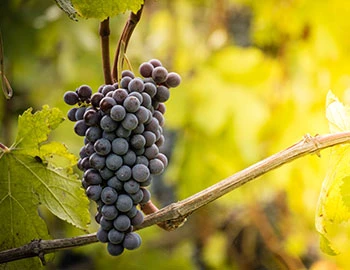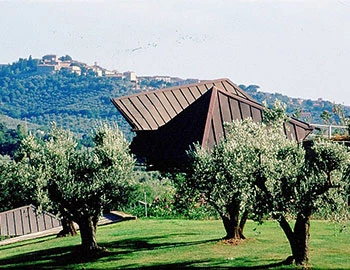
Barbaresco 2020
DOP Barbaresco, Angelo Gaja, 750 ml

| Grape variety: | Nebbiolo |
| Producer: | Angelo Gaja |
| Origin: | Italy / Piemont / Barbaresco |
| Other vintages: |
Description
Bright ruby colour of medium intensity. Typical nose of plum and wild berries with touches of tar and liquorice. Angelo Gaja's Barbarescos always have a lot of power and up-front tannin when young, but this does not detract from their finesse and intense aromatic expression. A great cellaring wine, this style beautifully showcases the best expression of Nebbiolo and its terroir.
Attributes
| Origin: | Italy / Piemont / Barbaresco |
| Grape variety: | Nebbiolo |
| Ripening potential: | 4 to 30 years |
| Drinking temperature: | 16 to 18 °C |
| Food Pairing: | Brasato di manzo al Barolo, Fegato alla veneziana, Beef Stroganoff |
| Vinification: | fermentation in steel tank, long must fermentation |
| Harvest: | hand-picking, strict selection |
| Maturation: | partly in barrique/ Pièces, partly in wooden barrel/foudre |
| Maturation duration: | 24 months |
| Volume: | 14.5 % |
| Note: | Contains sulphites |
Nebbiolo
Proud Piedmontese
It’s the king of Piedmont: the most sought-after wines come from Nebbiolo. It reaches its highest expression in Barolo and Barbaresco. Its acidic, tannin-rich wines in its youth are often unapproachable. With maturity, however, it develops an ethereal bouquet of cherry, liquorice, violet and rose, as well as truffles, tar and forest floor. Nebbiolo takes its name from the Italian “Nebbia”, meaning fog. This not because of the weather in Piedmont, but due to the whitish film on the ripe, red berries. It was first mentioned by this name in the 13th century. Much like the Pinot noir, Nebbiolo can precisely reflect its terroir, but only if it is really pleased with where it is. It likes cool climates and calcareous soils. Attempts have been made to transplant it, for example, to California, but the results were disappointing. It feels most comfortable in the hills of northern Italy.

Italy
Italy – Where wine is a way of life
The Italian wine regions are extremely diverse, and this is made clear in their wines. Established varieties such as Merlot, Syrah, and Sauvignon can be found on just 15 percent of the total vine growing area. The remaining 85 percent is reserved for autochthonous, indigenous varieties. More than 2,000 different grape varieties are grown under diverse conditions and pressed with various techniques into wines that reach the top tier of the international wine market.


